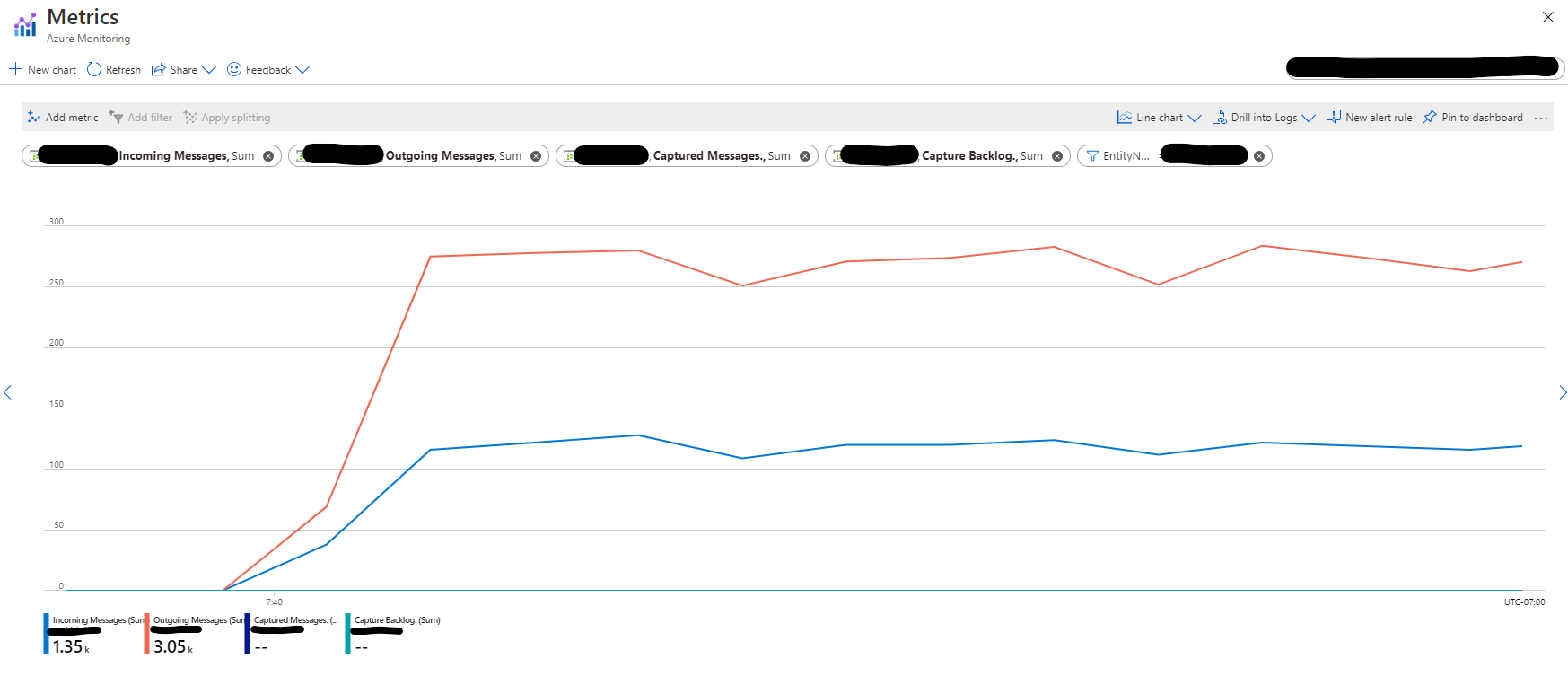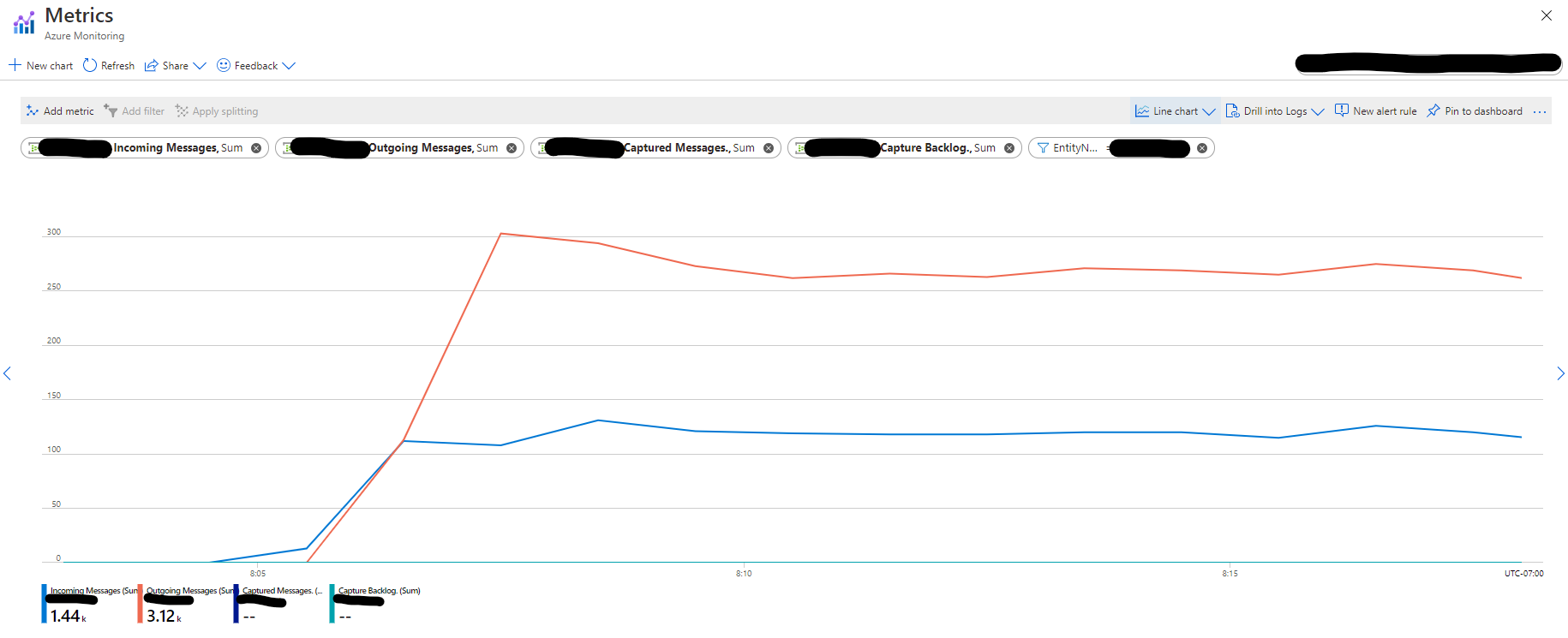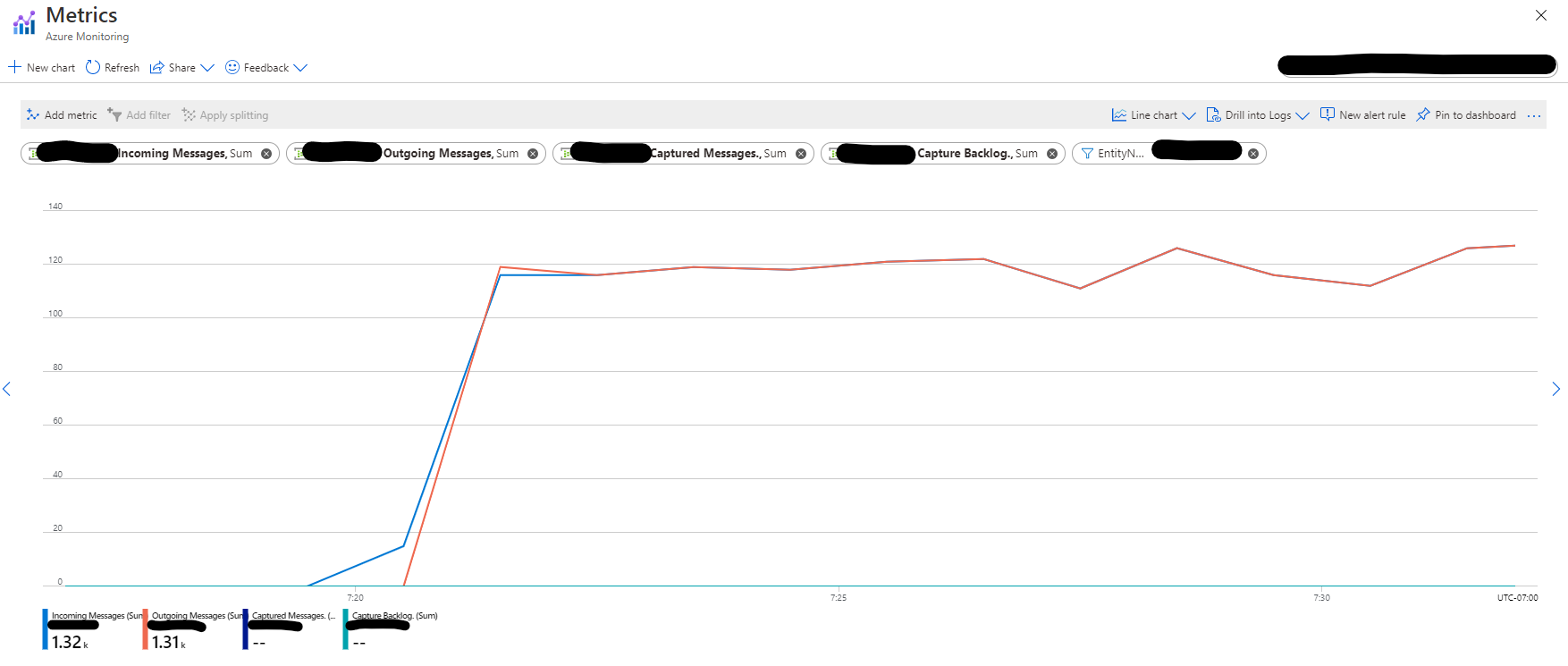9.7 KiB
How to Avoid the ReceiverDisconnectedException
In version 2.3.2 and above, the connector uses epoch receivers from the Event Hubs Java client.
This only allows one receiver to be open per consumer group-partition combo. To be crystal clear,
let's say we have receiverA with an epoch of 0 which is open within the consumer group foo on partition 0.
Now, if we open a new receiver, receiverB, for the same consumer group and partition with an epoch of
0 (or higher), then receiverA will be disconnected and get the ReceiverDisconnectedException.
In order to avoid this issue, there should be only one reader per consumer group-partition combo. In general, you should have a unique consumer group for each consuming application being run. Moreover, you should make sure that your code has been written in a way that does not result in re-computing the input stream from the eventhub.
In this document, we elaborate more on cases that result in recomputing the input stream unintentionally, and how you can avoid such cases by simple adjustments in your code.
Table of Contents
- Stream Recomputation
- Quick Check for Multiple Readers
- Examples of Having Multiple Readers Unintentionally
- Persist Data to Prevent Recomputation
Stream Recomputation
Sometimes a Spark application recomputes a single input stream multiple times. If the input stream is an Event Hubs instance,
this recomputation can eventually cause opening multiple receivers per consumer group-partition combo and result in getting
the ReceiverDisconnectedException. Therefore, it is important to make sure that the application that reads
events from an Event Hubs instance does not recompute the input stream multiple times.
RDD Actions
In Spark, RDD operations are either Transformations or Actions. In abstract, transfromations create a new dataset
and actions return a value. Spark has a lazy execution model for transfromations, which means those operations are
being executed only when there is an action on the result dataset. Therefore, a transfomed RDD may be recomputed
each time an action is being ran on it. However, you can avoid this recomputation by persisting an RDD in memory using
the persist or cache method. Please refer
to RDD Operations for more details.
Write to Multiple Data Sinks
You can write the output of a streaming query to multiple sinks by simply using the DataFrame/Dataset multiple times.
However, each write may cause the recomputation of the DataFrame/Dataset. In order to avoid this recomputation, similar
to the RDD case you can persist or cache the DataFrame/Dataset before writing it to multiple locations. Please refer to
Using Foreach and ForeachBatch
for more information.
Quick Check for Multiple Readers
A quick way to check if your application uses multiple readers is to compare the rate of Incoming and Outgoing messages to/from
the underlying Event Hubs instance. You have access to both Messages and Throughput metrics in the Overview page of
the Event Hubs instance on Azure Portal.
Assume you have only Spark application (with a single stream reader) that reads events from an Event Hubs instance.
In this case, you should see the number(or total bytes) of Outgoing messages matching the number (or total bytes) of
Incoming messages. If you find out the rate of Outgoing messages is N times the rate of Incoming messages,
it indicates that your application is recomputing the input stream N times. This is a strong signal to
update the application code to eliminate input stream recomputations (usually by using persist or cache method).
Examples of Having Multiple Readers Unintentionally
Multiple Actions
The code below is an example where a single read stream is being used by multiple RDD actions without caching:
import org.apache.spark.eventhubs._
import org.apache.spark.sql.DataFrame
import org.apache.spark.sql.streaming.Trigger
// EventHub connection string
val endpoint = "Endpoint=sb://SAMPLE;SharedAccessKeyName=KEY_NAME;SharedAccessKey=KEY;"
val eventHub = "EVENTHUBS_NAME"
val consumerGroup = "CONSUMER_GROUP"
val connectionString = ConnectionStringBuilder(endpoint)
.setEventHubName(eventHub)
.build
// Eventhub configuration
val ehConf = EventHubsConf(connectionString)
.setStartingPosition(EventPosition.fromEndOfStream)
.setConsumerGroup(consumerGroup)
.setMaxEventsPerTrigger(500)
// read stream
val ehStream = spark.readStream
.format("eventhubs")
.options(ehConf.toMap)
.load
ehStream.writeStream
.trigger(Trigger.ProcessingTime("5 seconds"))
.foreachBatch { (ehStreamDF,_) =>
handleEhDataFrame(ehStreamDF)
}
.start
.awaitTermination
def handleEhDataFrame(ehStreamDF : DataFrame) : Unit = {
val totalSize = ehStreamDF.map(s => s.length).reduce((a, b) => a + b)
val eventCount = ehStreamDF.count
println("Batch contained " + eventCount + " events with total size of " + totalSize)
}
As you can see in the graph below which shows the rate of Incoming vs Outgoing messages in the
Event Hubs entity, the number of Outgoing messages is almost twice the number of Incoming messages.
This pattern indicates that the above code reads events from the Event Hubs entity twice: Once when
it computes the reduce action, and once when it computes the count action.

Multiple Sinks
The code below shows how writing the output of a streaming query to multiple sinks creates multiple readers:
import org.apache.spark.eventhubs._
import org.apache.spark.sql.DataFrame
import org.apache.spark.sql.streaming.Trigger
// EventHub connection string
val endpoint = "Endpoint=sb://SAMPLE;SharedAccessKeyName=KEY_NAME;SharedAccessKey=KEY;"
val src_eventHub = "SRC_EVENTHUBS_NAME"
val dst_eventHub = "DST_EVENTHUBS_NAME"
val consumerGroup = "CONSUMER_GROUP"
val src_connectionString = ConnectionStringBuilder(endpoint)
.setEventHubName(src_eventHub)
.build
val dst_connectionString = ConnectionStringBuilder(endpoint)
.setEventHubName(dst_eventHub)
.build
// Eventhub configuration
val src_ehConf = EventHubsConf(src_connectionString)
.setStartingPosition(EventPosition.fromEndOfStream)
.setConsumerGroup(consumerGroup)
.setMaxEventsPerTrigger(500)
val dst_ehConf = EventHubsConf(dst_connectionString)
// read stream
val ehStream = spark.readStream
.format("eventhubs")
.options(src_ehConf.toMap)
.load
.select($"body" cast "string")
// eventhub write stream
val wst1 = ehStream.writeStream
.format("org.apache.spark.sql.eventhubs.EventHubsSourceProvider")
.options(dst_ehConf.toMap)
.option("checkpointLocation", "/checkpointDir")
.trigger(Trigger.ProcessingTime("10 seconds"))
.start()
// console write stream
val wst2 = ehStream.writeStream
.outputMode("append")
.format("console")
.option("truncate", false)
.option("numRows",10)
.trigger(Trigger.ProcessingTime("10 seconds"))
.start()
wst1.awaitTermination()
wst2.awaitTermination()
You can see in the graph below from the source Event Hubs entity that the number of Outgoing messages is almost twice the number of Incoming messages which indicates the existence of two separate readers in our application.

Persist Data to Prevent Recomputation
As we have mentioned before, one way to avoid recomputations is to persist (or cache) the generated DataFrame/Dataset from the input stream before performing your desired tasks and unpersist it afterward. The code below shows how you can run multiple actions on a DataFrame without recomputing the input stream:
import org.apache.spark.eventhubs._
import org.apache.spark.sql.DataFrame
import org.apache.spark.sql.streaming.Trigger
// EventHub connection string
val endpoint = "Endpoint=sb://SAMPLE;SharedAccessKeyName=KEY_NAME;SharedAccessKey=KEY;"
val eventHub = "EVENTHUBS_NAME"
val consumerGroup = "CONSUMER_GROUP"
val connectionString = ConnectionStringBuilder(endpoint)
.setEventHubName(eventHub)
.build
// Eventhub configuration
val ehConf = EventHubsConf(connectionString)
.setStartingPosition(EventPosition.fromEndOfStream)
.setConsumerGroup(consumerGroup)
.setMaxEventsPerTrigger(500)
// read stream
val ehStream = spark.readStream
.format("eventhubs")
.options(ehConf.toMap)
.load
ehStream.writeStream
.trigger(Trigger.ProcessingTime("5 seconds"))
.foreachBatch { (ehStreamDF,_) =>
handleEhDataFrame(ehStreamDF)
}
.start
.awaitTermination
def handleEhDataFrame(ehStreamDF : DataFrame) : Unit = {
ehStreamDF.persist
val totalSize = ehStreamDF.map(s => s.length).reduce((a, b) => a + b)
val eventCount = ehStreamDF.count
println("Batch contained " + eventCount + " events with total size of " + totalSize)
ehStreamDF.persist
}
The graph below from the Event Hubs entity shows the number of Incoming and Outgoing messages are almost the same, which means the application reads events only once despite executing two actions on the generated DataFrame.
